Get to Know Surfboard Shaper Ryan Lovelace
Meet surfboard shaper Ryan Lovelace, the artist behind some of the internet’s most viral boards.
-
CategoryArtisans, Makers + Entrepreneurs
Most custom surfboard shapers start their career sweeping the floors at their local surf shop or soaking up what they can from whichever master shaper they can get in the workshop with. Seattle-bred, now Santa Barbara- and Kauai-based hand shaper Ryan Lovelace went a decidedly different route. His journey started 20 years ago on his 19th birthday when he very frugally gifted himself the materials to make his own surfboard.
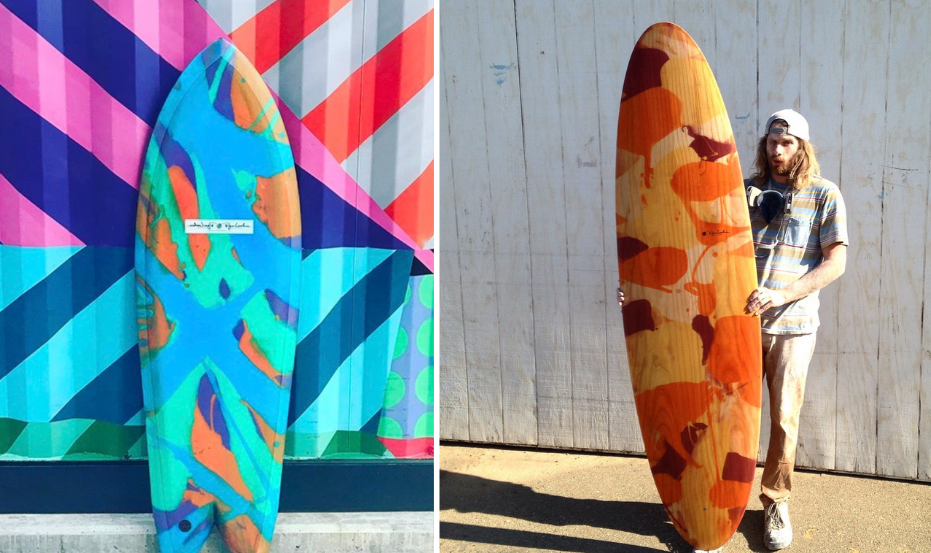
It was the early 2000s and the internet and social media weren’t the resources they are today for zealous DIY-ers like Lovelace. There was no YouTube or Instagram—just VHS tapes, The Surfer’s Journal, and some very limited websites to serve as his manual and mentor. “I didn’t even know that I could have someone else glass the board for me,” he remembers with a chuckle. “I was shopping for foam chunks at Home Depot because I didn’t know I could buy a blank with a stringer in it. I was so green it was insane.” But for Lovelace and the impact his now two decades-strong career has made on the custom surfboard industry, green is exactly what he needed to be.

His birthday board was just the beginning. Not knowing what he didn’t know worked in his favor, while curiosity and being “dumb enough to try anything” drove him to continue experimenting with building boards in all sorts of unexpected ways. “I started doing weird shit and people started getting interested,” he says. “I’d see a picture of the weirdest board, like the craziest experimental thing from the ’70s, and I’d be like ‘what the heck is that thing,’ and so I’d try and go make one.”
“I wasn’t doing real normal stuff. From day one, it was weird shit only.” —Ryan Lovelace
In 2005, just a few years after his 19th birthday and while still a student at Santa Barbara City College taking classes in marketing and business, he started realizing that there might be a future for him in making surfboards for a living. His offbeat builds were garnering him attention and customers. Paired with his natural affinity for photography and graphic design, it wasn’t much longer before he had a professional website and successful social media channel up and running to promote his work and bring people along through his process.
“I got a lot of resistance early on and pissed off a couple guys,” he says. “I don’t know if my situation was really, like, the prototype for the modern Instagram shaper. But hopping on social media and posting in 2006 and 2007 and gaining customers through that process had me and maybe two or three other guys as the first of a new generation of what is now kind of the only way to do it. In that way and at that time, it was and still is looked down upon in surf culture.”
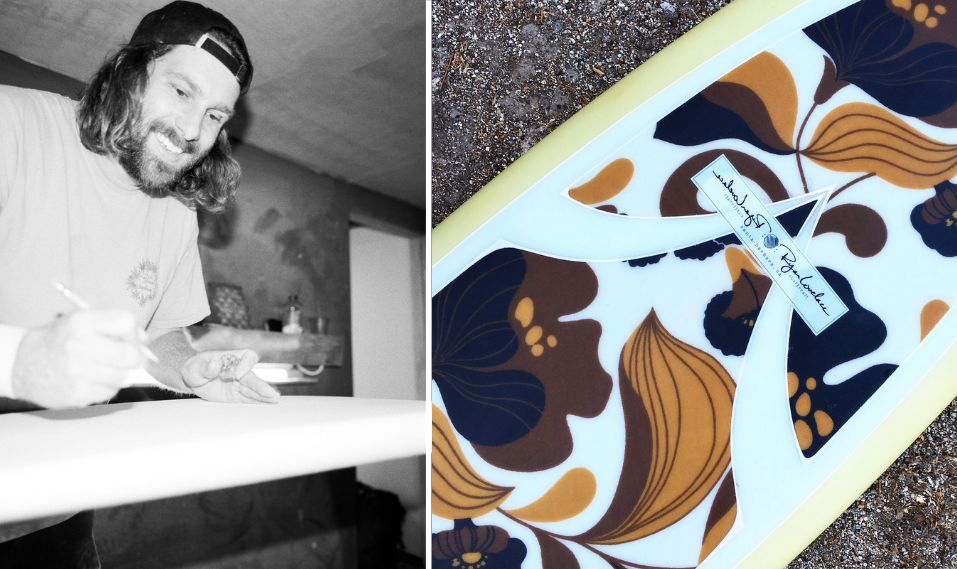
Lovelace never set out to skip steps or disrupt an industry; his life and personality sort of set him up for it. Building things and being creative is in his blood and his upbringing. His stepdad worked at a lumber yard and his dad was an oil painter with a penchant for ambitious projects, like the time he bought a dilapidated old Victorian house from 1903, tore it apart, and rebuilt it with his friends over the course of Lovelace’s entire childhood. “I woke up on the weekends to table saws and hammers,” he recalls. “That was my life.” If he and his brother wanted toy airplanes and go-karts growing up, they had to build them. “Anything you needed to make anything was just around me all the time.”
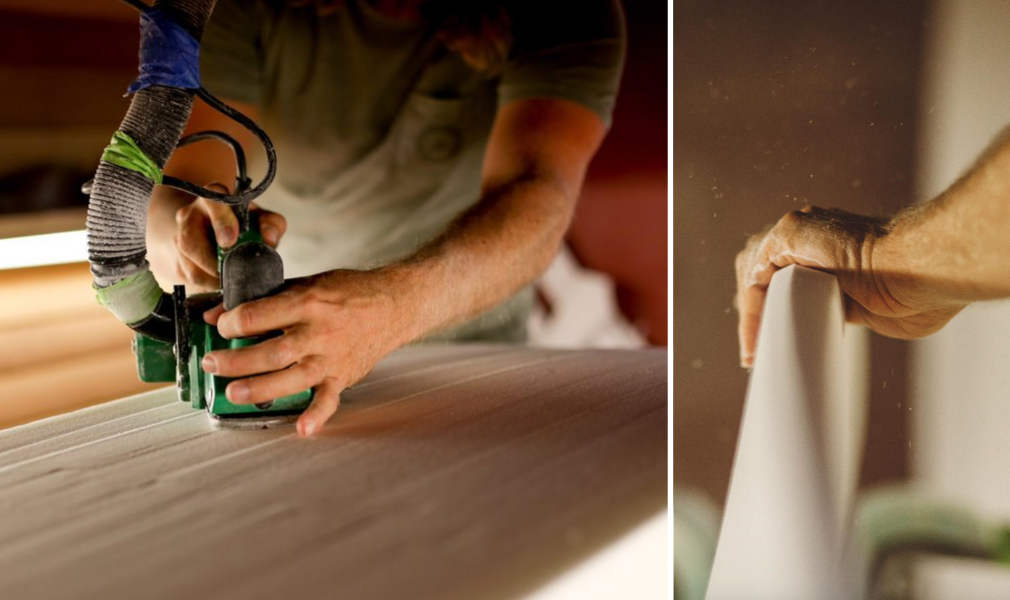
While Lovelace isn’t sure he’d go as far as to say his path to becoming a successful shaper was the right one, it perfectly suited his hard-headed and outside-the-box nature. Though he never had a teacher or mentor and would be the first to say he’s never been the best listener or student, he did get some form of education in building surfboards by way of materials. Soon after turning 19, he got a job at Fiberglass Hawaii. He had discovered miraculously while building his first board that “this magical land that sold surfboard blanks with stringers in them” just so happened to be three blocks from his house. Working there, he learned all he needed to know about composites, fiberglass layups, and resin types.
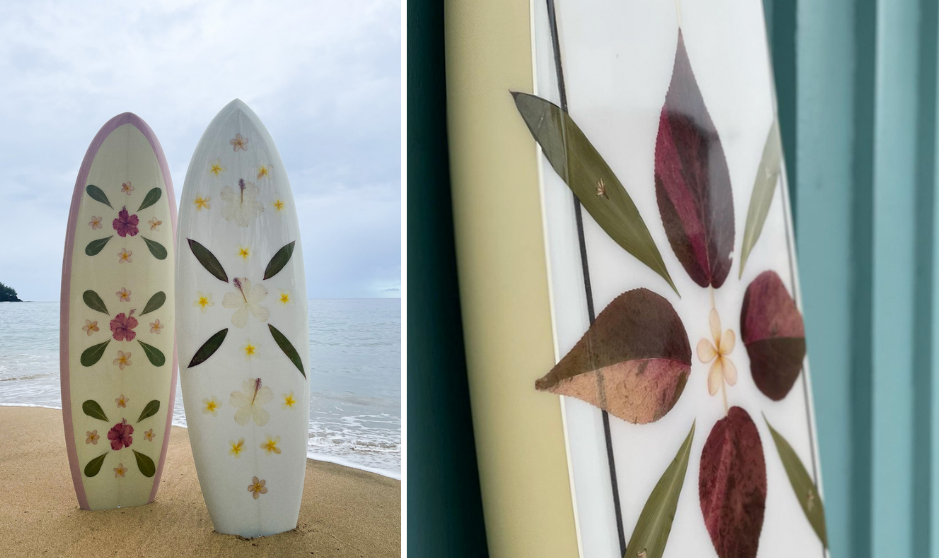
By the time he was graduating from Santa Barbara City College, a full-time career in making surfboards was organically clicking into place. Already in the habit of making a few boards a week and working at Fiberglass Hawaii, he also picked up a job glassing at Proctor Surfboards in Ventura, CA. In reflecting on this time in his career, he says, “I was bouncing, like pinging, trying to finish everything up. It was just cool. To me, it was just fun. I was having a great time. And surfing a ton.”
It was his viral flower inlays that took his career to a new level after being inspired by his grandmother’s leis growing up and being encouraged by his wife, Katie, to translate Hawaiian quiltmaking onto surfboards. Lovelace was the shaper to bring back the pressed flower trend popular in the ’70s, kicking off a full-on rebirth of full flower inlays on surfboards in the process. It took about two years of thinking through the process until he finally found a way to do it. Lengthy and meticulous, the process involves first finding the flowers locally while he’s in Hawaii, then deconstructing them, pressing them piece by piece, and rebuilding them on the board in a way that’s still structurally sound and flat.

Beautiful as they may be, the truth is that the flower inlays are something Ryan admits he can’t actually deliver all the time. Besides being extremely expensive and time-intensive, flower and plant inlays secrete oils that will delaminate a board quickly and can mess with the shape if not laid and pressed completely flat. “It shouldn’t be done all the time,” he says. “They’re special and they should stay special.” While he mostly talks a lot of customers off the flower-inlay ledge, he sometimes uses these orders to satisfy his more creative whims. “Sometimes I go into art board mode and I just want to make a couple of really pretty boards and this is where I’ll go.”
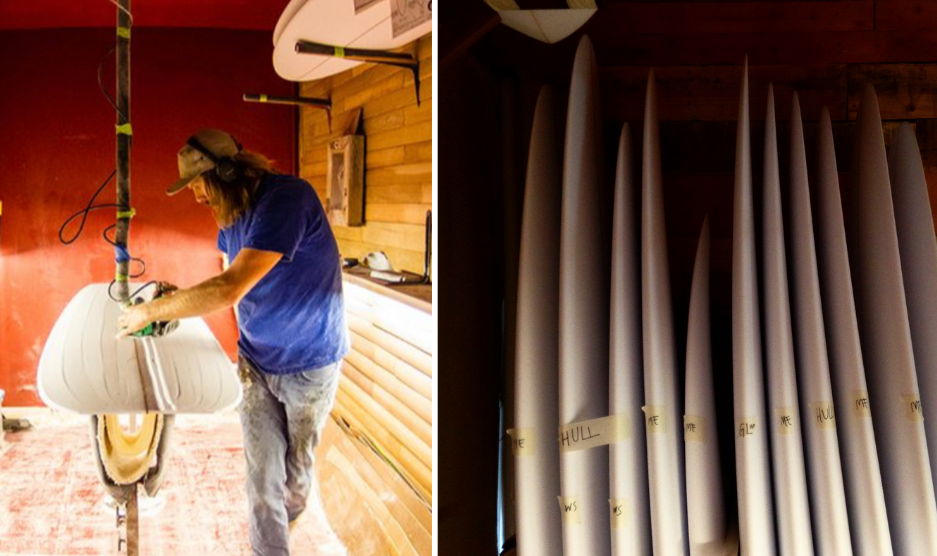
Walking customers off the ledge of flower inlays or not, he sees the process of working with a client and designing their dream board like surfboard therapy. “It’s my job to translate what I do into something that works for them and hits their marks,” he explains. “I like to know who they are, where they’ve been, what boards they’re on, where they want it to go, and what they’ve seen that sparks their curiosity. Generally, it’s me picking apart the details of what someone’s saying and figuring out how I can do justice to that request.”

Extremely creative, a bit of an outlier, and entirely self-taught, Lovelace sees it as his responsibility to bring something new to the industry, all while preserving the custom experience unique to surf culture. Through his eyes, the custom experience is one where you know your shaper, you might even surf with them, and that intimacy allows them to suggest what you ride or build it for you. “I think that’s what’s really special about surfing—that type of connection to the person making your thing is still full-time. I don’t know another industry where that still exists. It’s worth preserving. It’s worth respecting.”
To date, he’s built more than 5,000 custom boards, piecing them together across his two workshops: one on the North Shore of Kauai and the other in Santa Barbara, CA. His boards have made it to the pages of major surf publications, and in 2016, he won the Icons of Foam Tribute to the Masters Shape-Off. In addition to hand-shaping custom surfboards, he has started an initiative called Trimcraft as a way to help younger shapers learn the craft. More recently, he added LOVEMACHINE to the mix as a solution to machine-produce replicas of some of his favorite hand-shaped designs at lower price points.
Learn more about Ryan and his work at rlovelace.com or find him on Instagram at @ryanlovelace.
Hey, Weekend: Bites & Bytes
Nobu Palo Alto finds a perfect pairing in high tech and haute cuisine.
Get the Latest Stories





